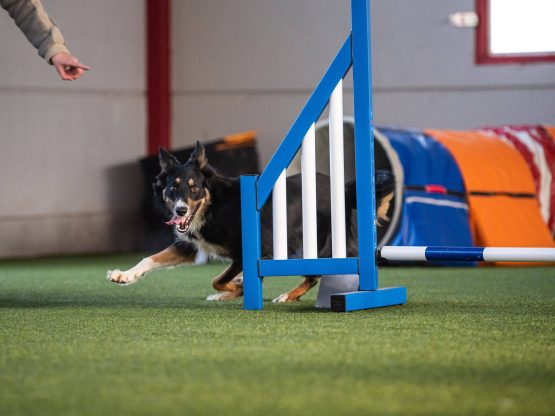Agility training is a fun and rewarding activity for dogs of all ages, but as our canine companions get older, it's important to make some adjustments to ensure their safety and comfort. With the right modifications, agility training can be a great way to keep senior dogs active, engaged, and mentally stimulated.

The first step in adapting agility training for senior dogs is to consult with your veterinarian. They can assess your dog's overall health and provide recommendations for any modifications that may be necessary. This can include adjusting the height of jumps, shortening the course, or reducing the overall intensity of the workout.
Another important consideration is the surface on which the course is set up. Hard surfaces like concrete or asphalt can be tough on older dogs' joints, so it's a good idea to set up the course on grass or other softer surfaces. Additionally, providing extra padding or cushioning under obstacles can help to reduce the impact on your dog's joints and provide additional support.
As dogs age, their eyesight and hearing may start to decline, making it more difficult for them to navigate the course. Using bright, contrasting colors and clear, concise commands can help to ensure that your senior dog is able to see and hear what they need to in order to successfully complete the course.
Finally, it's important to be mindful of your senior dog's overall energy levels and avoid pushing them too hard. Shorter, more frequent training sessions can be more effective and less tiring for older dogs. Additionally, providing plenty of breaks and rewards can help to keep them motivated and engaged throughout the training session.
